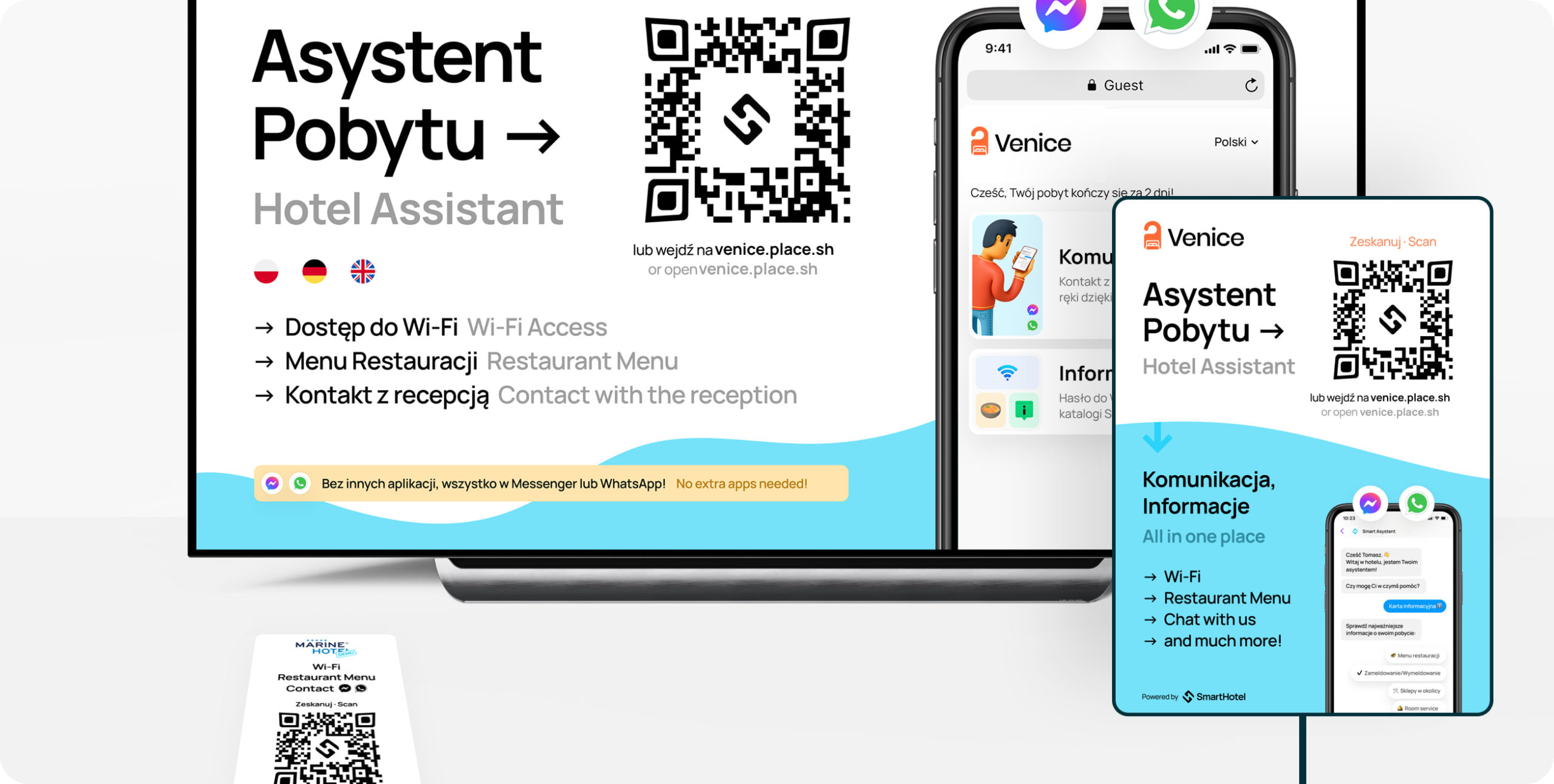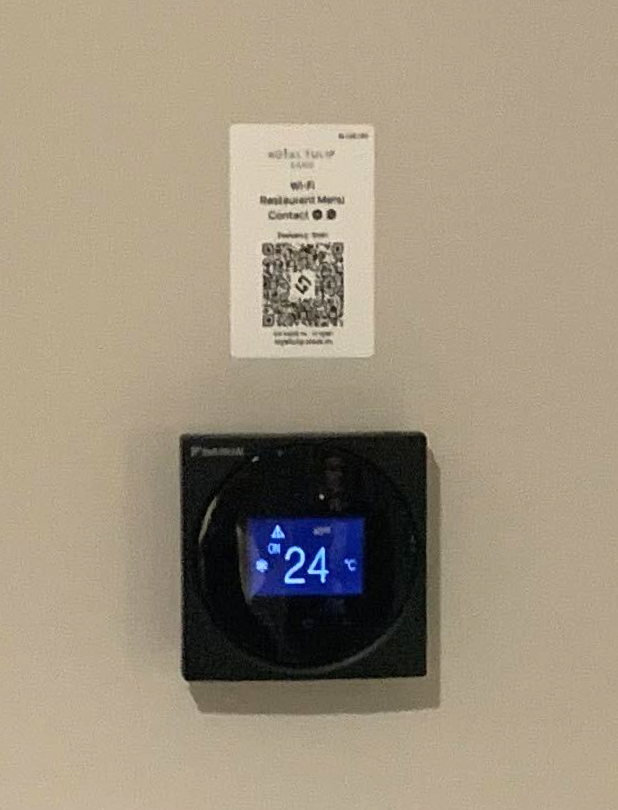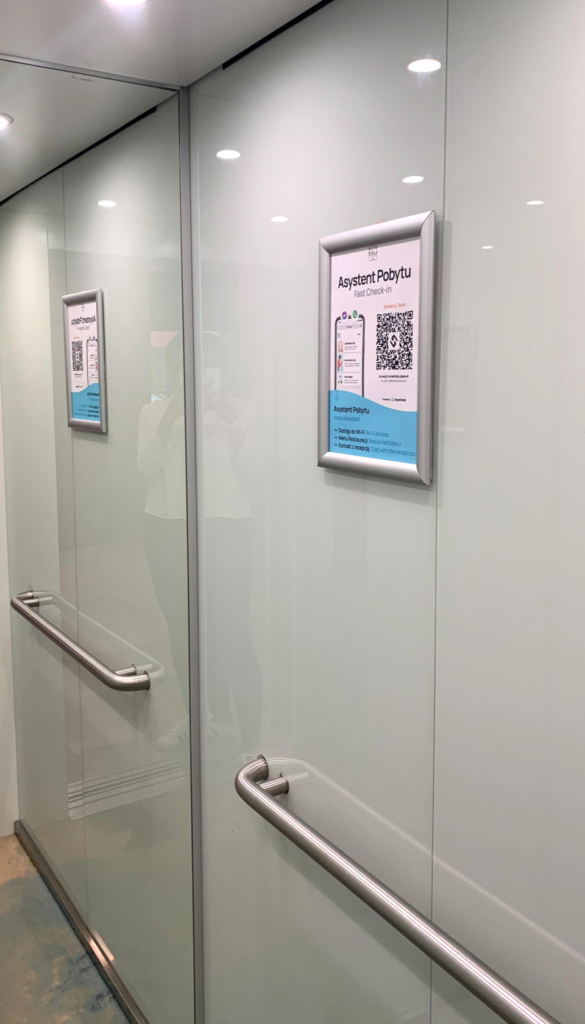The costs associated with the production and flow of documents (not only printing costs) consume 5 to 15 percent of the company's annual revenues and are still growing - according to IDC data.
Migrating from paper to digital is a fundamental element of any digital transformation strategy.
Research confirms that the office environment, and in particular the processes related to the production and flow of documents in large enterprises, can be a source of significant savings.
Let’s think about how many prints per month or year are generated by your facility? Registration cards, hotel guides, restaurant menus, SPA price lists, special offers, promotions, etc. What if you could reduce the production costs of these prints and at the same time act to protect the environment? Is it possible to reduce or even discontinue the production of standard hotel prints? The answer is yes.
Print remains a valuable and integral business function, but organizations struggle to understand how print infrastructure fits within the context of broader strategic IT initiatives, such as IT outsourcing, cloud migration, and digital transformation (DX). Most enterprise organizations today are engaged in a headlong battle to modernize IT infrastructure fueled by a digital-first mantra.

Highlights:
- 7% of an enterprise’s revenue is spent on digital transformation initiatives.
- 49% of business operations already rely on digital infrastructure.
- 46% of organizations are still in the beginning stages of digital transformation.
- Only 4% of organizations are fully transformed.
- 70% of organizations prefer as-a-service or consumption-based models over traditional financing methods to reduce upfront costs.
Over the past few years, two trends have dominated the office technology landscape: the integration of mobile technology as a business computing platform and the ongoing progression toward a digital-first strategy. Digital transformation is now foundational for organizations of all types, and significant IT spending is allocated to these broader DX programs. According to IDC’s 2019 Digital Transformation Executive Sentiment Survey, an average of 3.7% of an enterprise’s revenue is spent on digital transformation initiatives. These efforts are fueled by many different variables; however, the targeted goals remained unchanged. Operationally, businesses need to become more agile, innovative, responsive, and customer-centric to stay competitive.
Why does print matter in today’s business environment?
For most enterprise organizations, print is not a priority. Nevertheless, print is viewed as a requirement for the foreseeable future and remains an essential service that IT departments must continue to support. While print is not always considered strategic, 43% of organizations are investing in print infrastructure as part of their broader DX initiatives, and for good reason. Print remains an integral and important business function, and paper remains entrenched in most businesses’ processes today. IDC’s 2019 Document Processes Survey shows that knowledge workers still need paper to complete their daily activities.
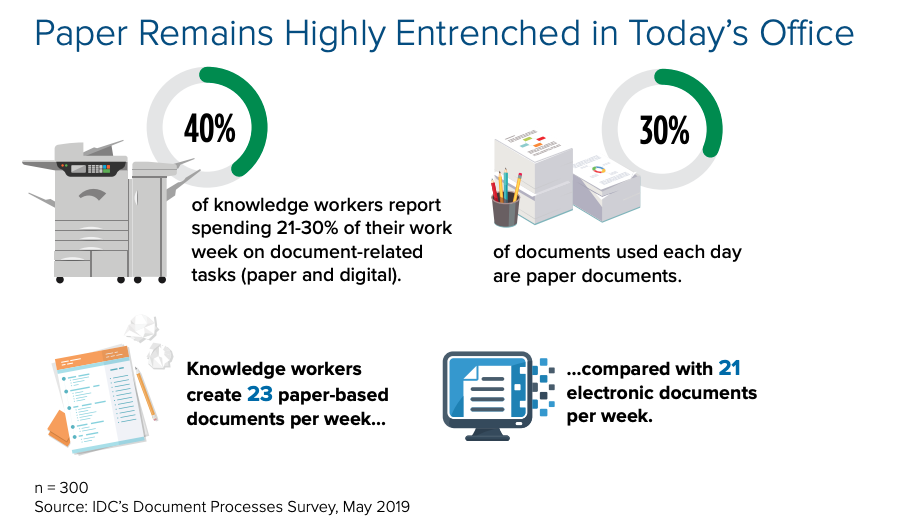
It is important to distinguish between what is considered essential and nonessential printing in today’s business environment. There are several horizontal (back-office) use cases spanning across industry sectors that continue to rely heavily on paper, such as customer and employee onboarding, expense reporting, sales operations, applications processes, and purchasing.
Despite its importance to business operations, print remains troublesome for many organizations and is often viewed as a drain on existing IT resources. Businesses continue to identify challenges associated with their existing print environment. Not surprisingly, security is the top concern and number 1 priority for organizations that want to modernize the print infrastructure. Even so, costs and challenges associated with the ongoing management and support of on-premises print infrastructure, including print servers, are ranked almost equal in importance.
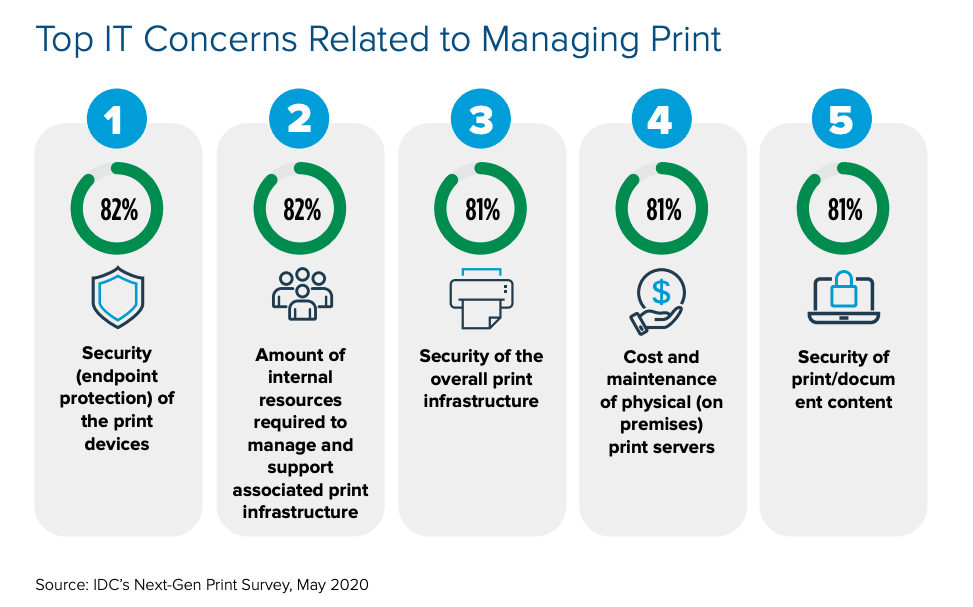
Bridging the gap between paper and digital
Migrating from paper to digital is a fundamental element of any digital transformation strategy. The transition to digital, cloud and mobile technology has fundamentally altered the way businesses work with information. At the same time, removing paper whenever and wherever possible has been earmarked as a means for improving efficiency, driving cost reduction, and activities for environmental protection. The notion of a paperless office has been discussed for years, but for many reasons, it has yet to fully materialize.
Of course, recent events have altered the office technology landscape, and there is some speculation that work-from-home policies enacted as a result of the COVID-19 pandemic might signal the beginning of a more precipitous decline in paper use in the office environment. While the need for ad hoc printing might be going away, any desire to go 100% paperless is less prevalent today. For most enterprises, the complete elimination of print and paper usage is difficult to justify based on the level of disruption to existing workflow and business operations. Those back-office printing applications already identified will not simply disappear unless they are replaced by some form of digital alternative, and in many cases, that is cost-prohibitive. Indeed, IDC’s research shows that organizations expect very few changes in print requirements over the next two years.
At the same time, it seems that the use of paper is critically important for communication and collaboration. Internal and external communications for most organizations are typically handled through several channels. Internal or across-company communications efforts are mostly controlled and digitally born, while external communications are more likely to be paper-based. The use of paper is also highly influenced by the habits and preferences of knowledge workers.
Is it finally possible to reduce or even discontinue the production of standard hotel prints?
There is no need to print a registration card.
SmartHotel provides remote check-in, even before arrival. Your Guest can check in up to two weeks before their arrival. The simplified procedure requires only the most important information. No extra apps are needed. Check-in was never quicker, easier and more ecological.
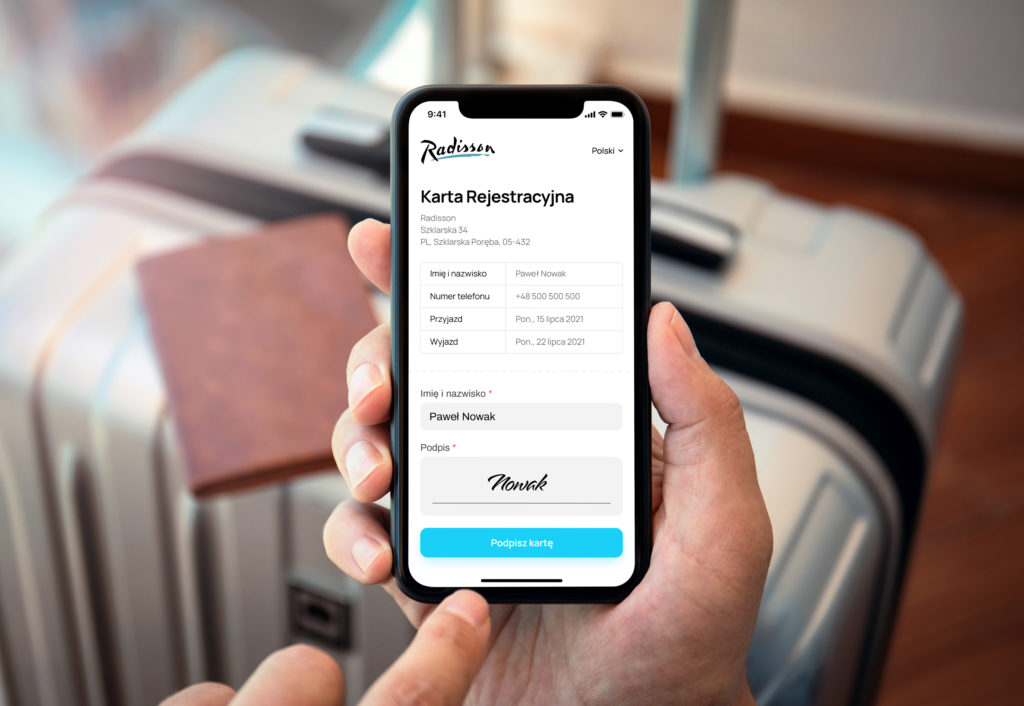
There are no need to print a Hotel Guide, restaurant menus, or SPA price lists.

No more notebooks at the reception desk.
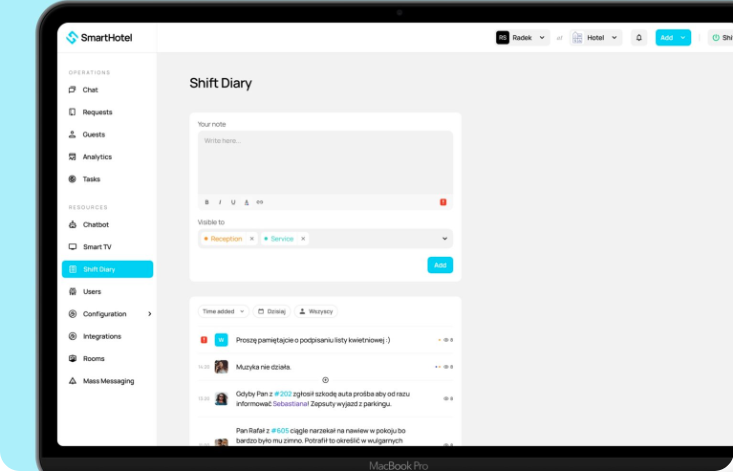
Get to know SmartHotel system and #StaySmart with the best technology solutions: https://mysmarthotel.com/
Sources: International Data Corporation (IDG, Inc.)
Author
Agata Krzywania
Marketing and Communications Manager
